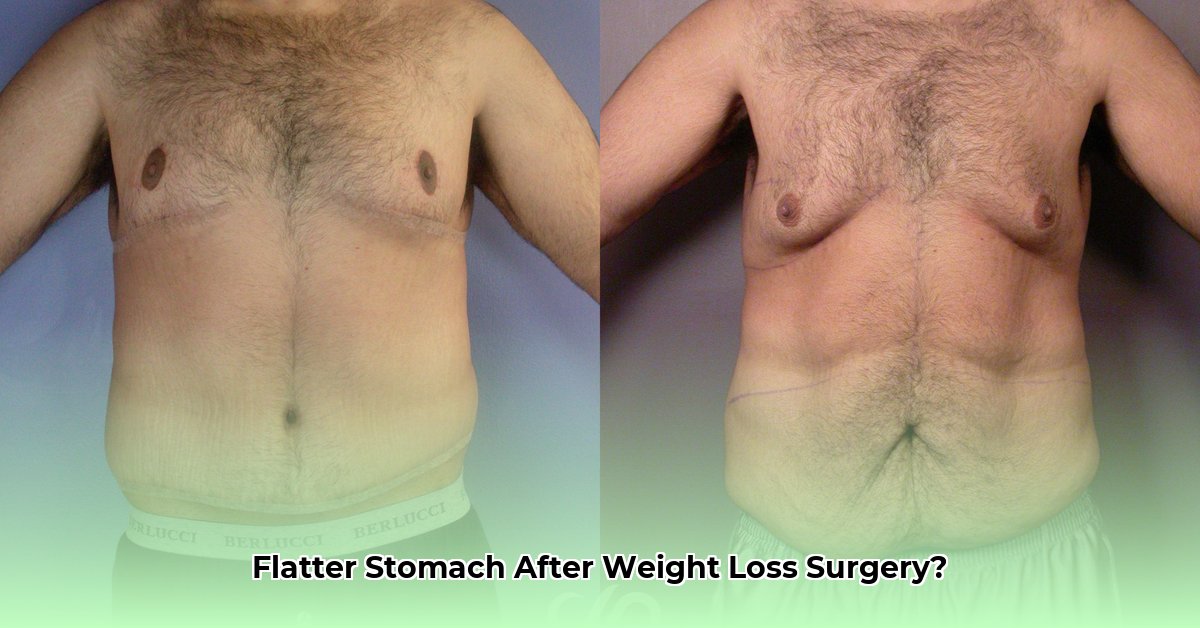
Congratulations on your incredible weight loss journey! Achieving significant weight loss is a monumental accomplishment. However, many individuals find themselves with excess skin and fat around their abdomen, even after reaching their goal weight. A tummy tuck, or abdominoplasty, may offer the solution you're seeking to achieve a flatter, more toned stomach. This guide will provide you with the information you need to make an informed decision about this procedure.
Understanding the Tummy Tuck Procedure
A tummy tuck is a surgical procedure designed to remove excess skin and fat from the abdomen. It also tightens the underlying abdominal muscles, resulting in a firmer, flatter midsection. This is especially beneficial for those who have lost a substantial amount of weight and are left with loose skin that doesn't respond to diet and exercise. But is it right for you?
Am I a Good Candidate for a Post-Weight Loss Tummy Tuck?
Several factors determine your suitability for a tummy tuck. Firstly, your weight should be stable for at least six months prior to surgery. Significant weight fluctuations after the procedure can compromise the results. Your surgeon will assess your overall health, skin elasticity, muscle tone, and the amount of excess tissue. "A tummy tuck isn't a weight-loss solution," explains Dr. Amelia Hernandez, Board-Certified Plastic Surgeon at the City Center Surgical Clinic. "It's designed to address excess skin and muscle laxity after significant weight loss has already been achieved."
Different Types of Tummy Tucks: Finding the Perfect Fit
The type of tummy tuck best suited for you depends on your individual needs and body type. Here are some common options:
- Mini Tummy Tuck: Focuses on the lower abdomen, ideal for those with excess skin and fat primarily below the belly button. It's less invasive and offers a faster recovery time.
- Full Tummy Tuck: Addresses excess skin and fat across the entire abdomen, tightening the abdominal muscles for a more comprehensive result.
- Extended Tummy Tuck: This option covers a wider area, often addressing excess skin on the flanks (sides) as well.
- Fleur-de-lis Tummy Tuck: This is the most extensive type, addressing skin and fat across the entire abdomen, both upper and lower sections. It is suitable for significant skin laxity.
Your surgeon will help you choose the most appropriate procedure based on a thorough evaluation.
What to Expect During the Tummy Tuck Process: A Step-by-Step Guide
The tummy tuck process typically involves these steps:
- Initial Consultation: Discuss your medical history, goals, and concerns with your surgeon. They'll determine your candidacy and answer your questions.
- Pre-Operative Preparation: Your surgeon will provide specific instructions regarding diet, medications, and pre-operative care.
- The Surgery: Excess fat and skin are removed, and the abdominal muscles are tightened. Liposuction may be incorporated to further refine the contour. The procedure usually requires general anesthesia.
- Post-Operative Recovery: Expect discomfort, swelling, and bruising. Follow your surgeon's aftercare instructions diligently for optimal healing. Recovery time varies depending on the procedure's extent.
Weighing the Pros and Cons: A Realistic Perspective
As with any surgery, there are advantages and disadvantages. Consider these factors carefully:
Pros:
- Improved abdominal contour and a firmer midsection.
- Improved self-confidence and body image.
- Removal of excess skin, which can cause irritation and moisture trapping.
- A more permanent solution (assuming weight stability).
Cons:
- Surgical risks, including infection, bleeding, excessive scarring, and blood clots.
- Significant recovery time, including discomfort, swelling, and bruising.
- Potential for complications like seroma (fluid buildup).
- Relatively high cost and usually not covered by insurance.
Choosing the Right Surgeon: A Critical Decision
Selecting a qualified and experienced board-certified plastic surgeon is crucial. Research several surgeons, review their credentials, examine before-and-after photos, and read patient testimonials. "Communication is key," advises Dr. David Lee, a Board Certified Plastic Surgeon from the Northwest Plastic Surgery Group. "Choose a surgeon you feel comfortable with, who thoroughly explains the process and addresses all your questions."
How to Choose the Right Tummy Tuck Procedure for Your Body Type
Choosing the right tummy tuck procedure is highly individualized. Your surgeon will evaluate your skin laxity, fat distribution, and personal goals to determine the best approach.
Understanding Your Options
The variety of tummy tuck procedures, as detailed above, enables a customized approach. The right choice depends on the extent of skin laxity, your distribution of fat, and your overall aesthetic aims.
Assessing Your Body and Needs
Your consultation will involve a thorough assessment of your skin laxity, fat distribution, medical history, and aesthetic goals. Your surgeon will discuss the risks and benefits of different procedures and recommend the most suitable approach for your specific circumstances. The involvement of Liposuction will also depend on these factors.
Recovery and Realistic Expectations
Recovery time will range from several weeks to months depending on the procedure's complexity and your individual healing abilities.
Addressing Potential Complications
While rare, potential complications include infection, hematoma, excessive scarring, and nerve damage. Your surgeon will discuss these risks during the consultation.
Key Takeaways:
- Tummy tucks offer a solution for excess skin and fat after weight loss, leading to improved body image.
- A thorough consultation with a qualified surgeon is crucial to determine candidacy and the most appropriate procedure.
- A realistic understanding of recovery time and potential complications is vital for making an informed decision. Open communication with your surgeon is essential throughout the entire process.